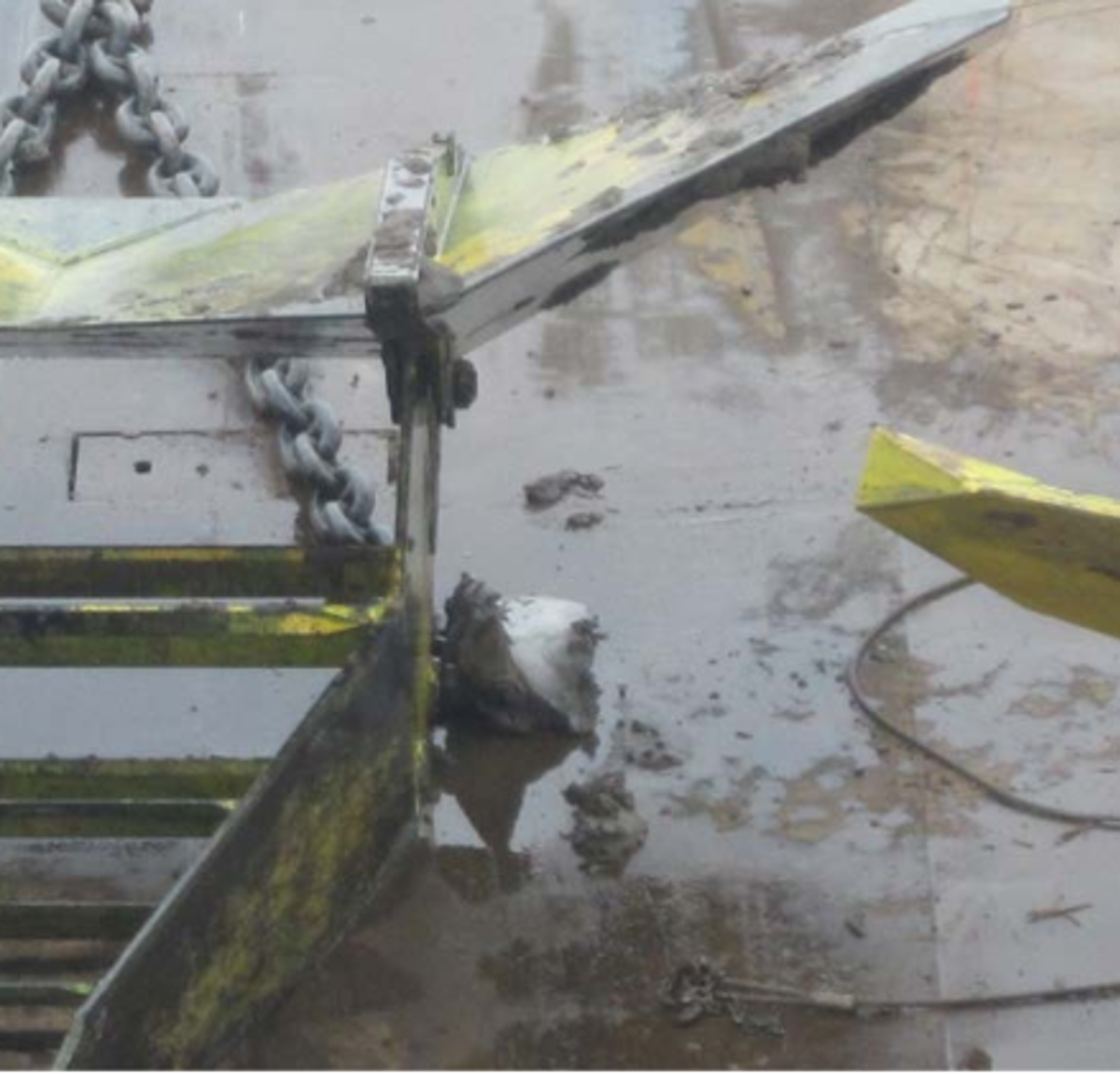Person hit by mud/clay during anchor handling operations
- Safety Flash
- Published on 29 November 2016
- Generated on 2 July 2025
- IMCA SF 32/16
- 2 minute read
Jump to:
The Marine Safety Forum (MSF) has published a safety alert regarding an incident in which a person was hit by mud/clay during anchor handling operations.
What happened?
The incident occurred during recovery of anchors from the seabed. A person was injured when a 50 kg lump of mud/clay rolled onto his back as he was checking the identification number of a shackle. The injured person was a marine representative. The anchor was secured on deck and tension was off but the anchor had not been disconnected and moved to the stowage area. Most of the mud/clay had fallen off during the recovery but some mud/clay was still attached to the anchor.

The submitter of the report notes that the injured person did not see the hazard and as he was leaning down the mud/clay rolled off and hit him over his back. He fell and sprained his ankle and suffered pain in his back as the result of the incident.
It should be noted that it remains everyone’s responsibility to STOP unsafe acts and to ensure all persons on deck are operating in a safe manner.
IMCA notes that the root causes of this incident are not in the report. Failure to properly control the worksite, inadequate risk assessment, and inadequate supervision, would appear to be amongst the causal factors in this incident.
The full report can be found here.
IMCA Safety Flashes summarise key safety matters and incidents, allowing lessons to be more easily learnt for the benefit of the entire offshore industry.
The effectiveness of the IMCA Safety Flash system depends on the industry sharing information and so avoiding repeat incidents. Incidents are classified according to IOGP's Life Saving Rules.
All information is anonymised or sanitised, as appropriate, and warnings for graphic content included where possible.
IMCA makes every effort to ensure both the accuracy and reliability of the information shared, but is not be liable for any guidance and/or recommendation and/or statement herein contained.
The information contained in this document does not fulfil or replace any individual's or Member's legal, regulatory or other duties or obligations in respect of their operations. Individuals and Members remain solely responsible for the safe, lawful and proper conduct of their operations.
Share your safety incidents with IMCA online. Sign-up to receive Safety Flashes straight to your email.